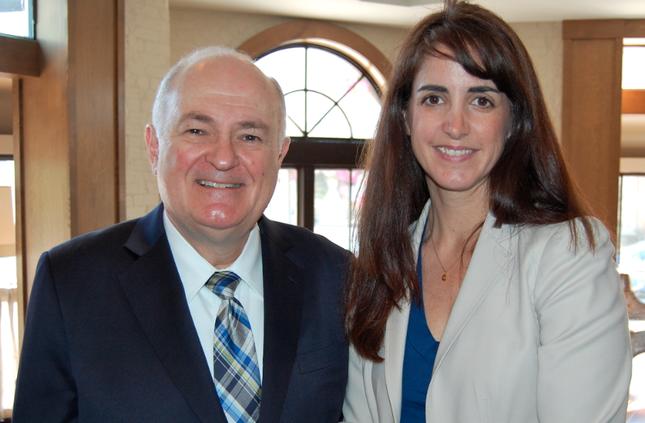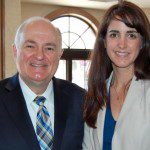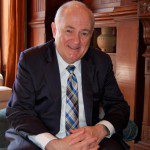GW’s Knapp: ‘Universities Key Part of Urban Cultural Landscape’
By • May 21, 2015 0 1384

When Steven Knapp became the 16th president of the George Washington University in 2007, one among many of the top priorities he set for himself was to enhance the school’s partnerships with neighboring institutions.
As he spoke at the Georgetown Media Group’s Cultural Leadership Breakfast at the George Town Club May 7, Knapp displayed voluminous knowledge about a host of subjects and laid out the criteria and the actions that have made the university a big cultural player in Washington, D.C. He also probably laid the groundwork for future partnerships when all was done and said, which was a lot.
When you talk about enhancing partnerships with neighboring institutions you can’t get much more enhancement than that which George Washington University got during the last two years.
In 2014, GWU joined together with the National Gallery and the Corcoran Gallery of Art and Corcoran College of Art and Design, thus saving and preserving the Corcoran legacy and the institution. In the arrangement, the university took over the Corcoran School of the Arts and Design and which was merged into GW’s Columbian College of Arts and Sciences.
“This part of it was a great boost for our students, and the students at the Corcoran, who will now have access to a host of programs that will help them pursue their goals and expand the opportunities for learning and producing art,” Knapp said.
During that time, GW also merged with the Textile Museum, a relatively small and hidden museum, which moved from its former location on S Street (it had been closed since with 2013) to its current 21st Street, a 55,000-square-feet complex shared with the Albert H. Small Washingtoniana Collection.
“I think universities are a key part of the urban cultural landscape,” Knapp said. “This is especially true today when the state of arts education at public school is not in very good shape. It’s our responsibility to work with the city’s institutions, create partnerships with the schools, work with other universities in our consortium, to provide cultural experience, expand opportunities to create and make art. … I think in the case of both the Corcoran and the Textile Museum, we have made ourselves and the institutions better. We have served our students as well as the cultural communities. “
Knapp, who seems plugged into Wikipedia as he speaks, displayed his diverse interests, flavoring the history of GW as a Washington (the city and George) instituton, by seasoning GW’s march of progress to its current status as a top university with historical, biographical and just-so-you-know-if-you-didn’t bits of information.
He came to GW by way of the University of California at Berkeley, where he taught English literature and was a specialist in Romanticism, literary theory and the relation of literature to philosophy and religion. After that he was Provost at Johns Hopkins University in Baltimore.
Knapp’s portrait of Washington as a city with a dense, diverse and major cultural profile provided a fitting end to the inaugural season of GMG Cultural Leadership Breakfasts, which have ranged from Deborah Rutter, president of the Kennedy Center, Jenny Bilfied of Washington Performing Arts, Kim Sajet, Director of the National Portrait Gallery, Martin Wollison, director of the Clarice Performing Arts Center at the University of Maryland, Arvind Minocha , CEO of the Wolf Trap Foundation, and Ari Roth, the embattled former director of Theater J.
- GWU President Steven Knapp and Maryann Lombardi, executive director of Lisner Auditorium.




